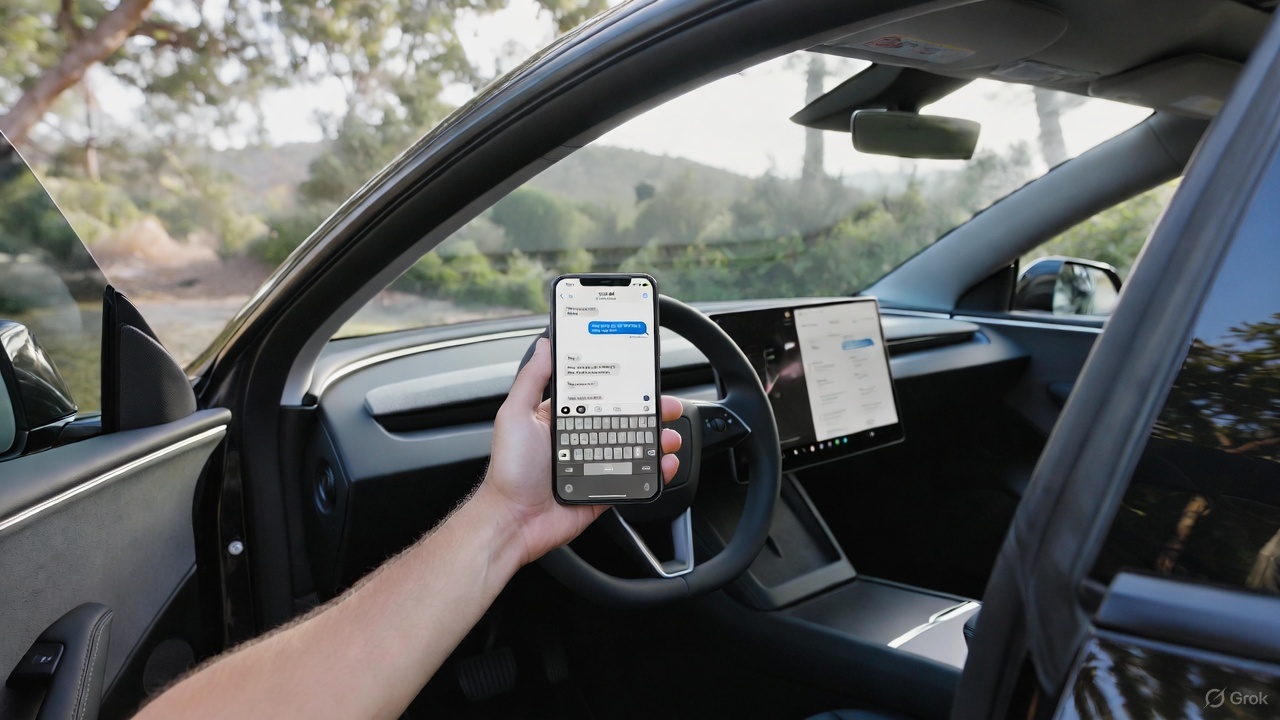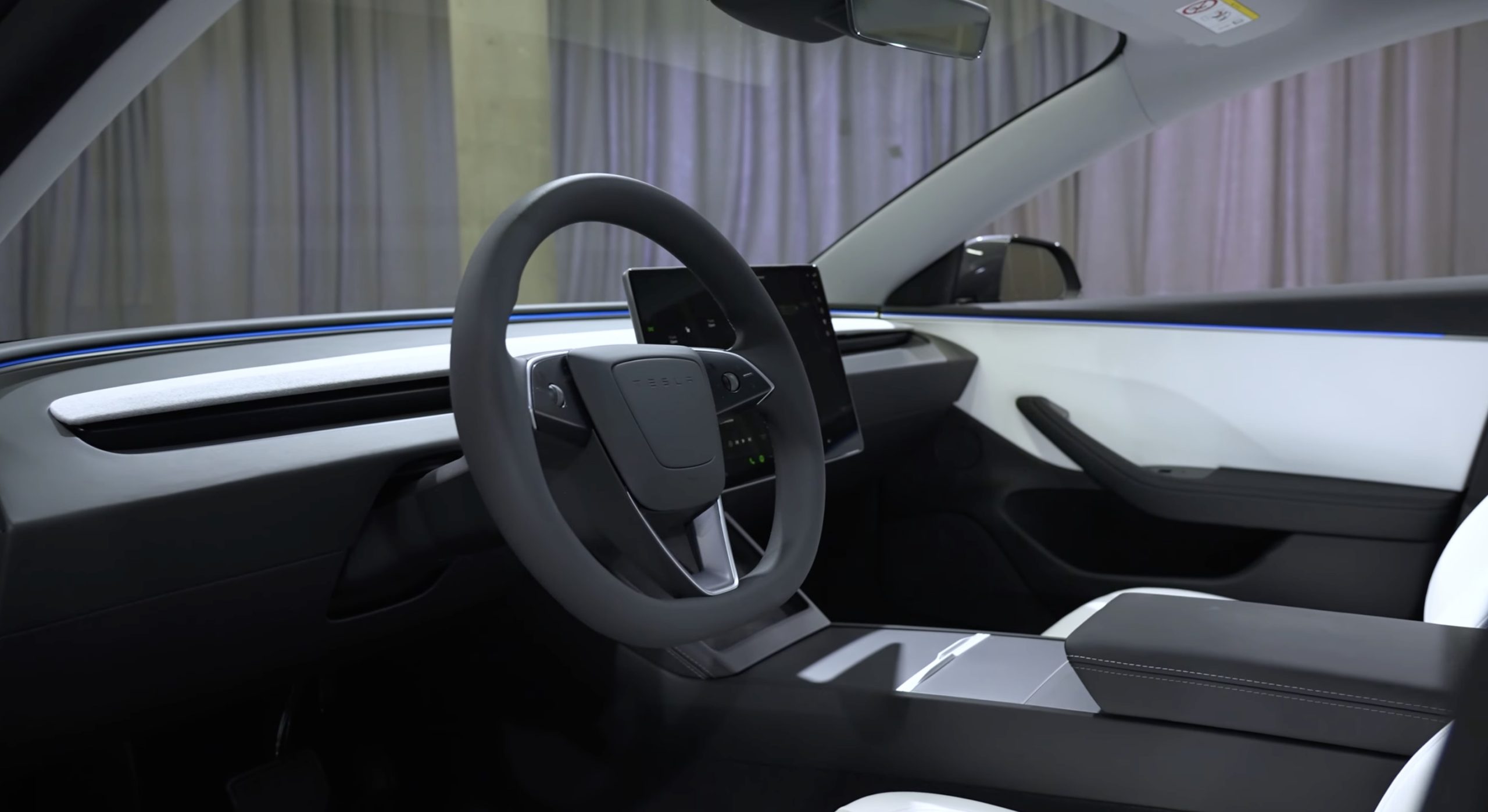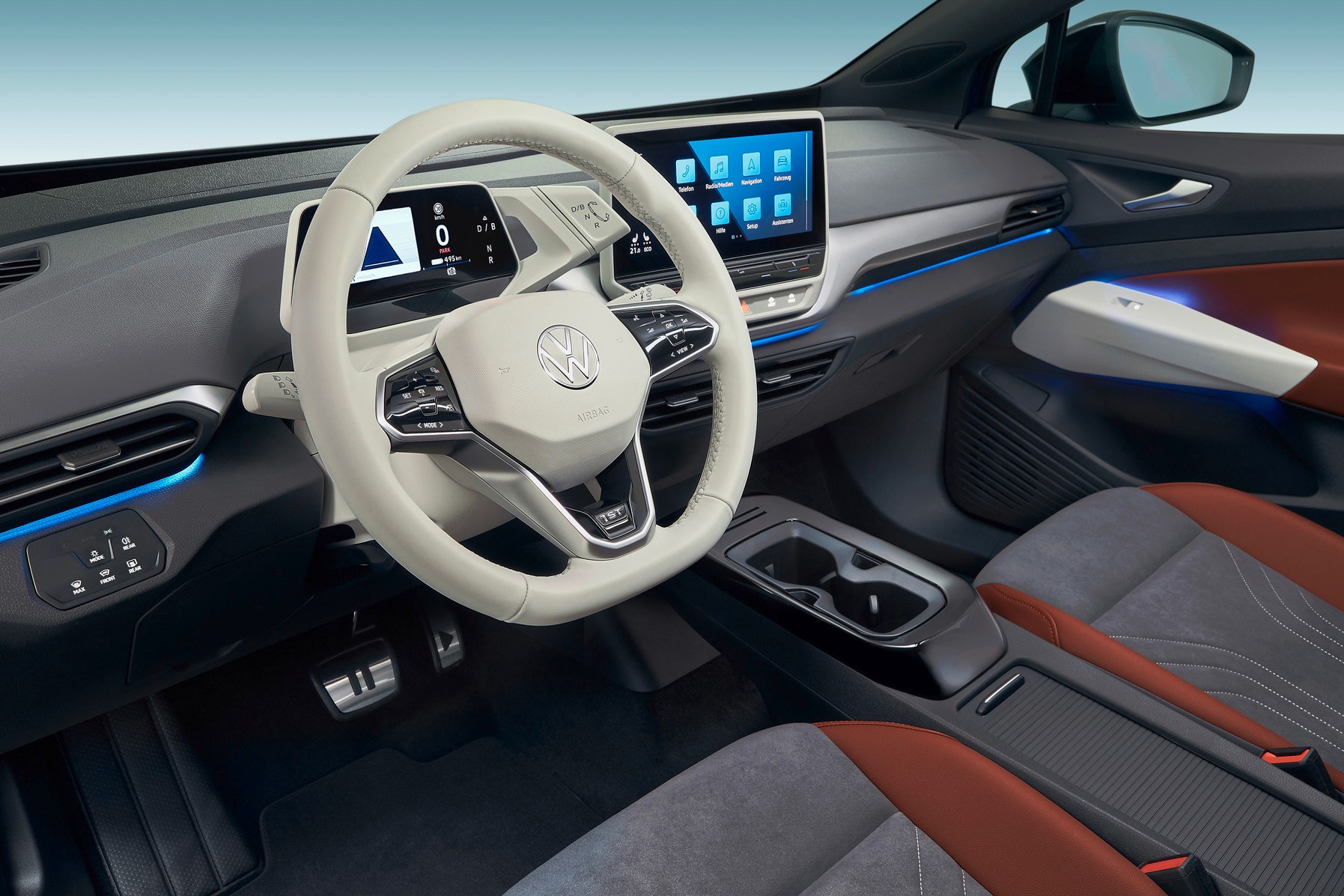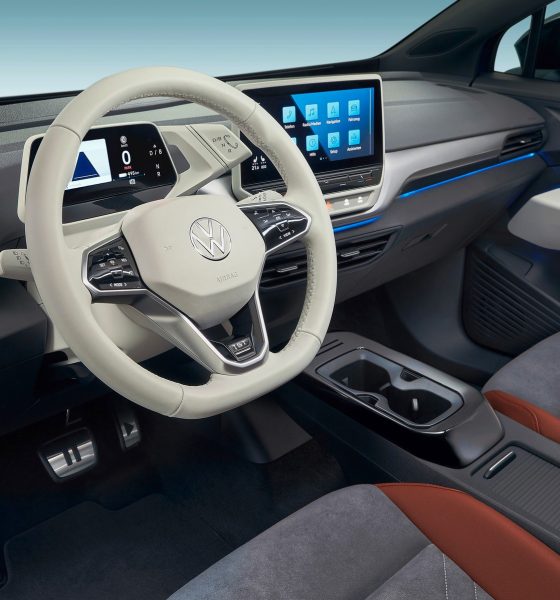Volkswagen has a long and storied tradition of building world-class vehicles. While they have managed to make a legacy off of offering affordable, stylish, and effectively-performing models for 84 years, their next big challenge comes in the tall task of creating and engineering electric vehicles that are functional. While this sounds like an easy task for the legendary German car company, it has encountered several problems over the course of its MEB platform’s development. The narrative of the problem solving has changed several times in the past year.
The software issues for Volkswagen have been evident since the initial development of the ID. family of vehicles. Now, Volkswagen has been relatively transparent regarding the issues with its software in the past. Recently, there has been a trend, however, in how the company’s software project is being portrayed because for a while, Volkswagen was pawning off its software as “fixed.” It is obvious this isn’t the case.
Yesterday, a report came out that indicated CEO Herbert Diess was interested in keeping the software fixes in-house and that he wasn’t interested in having some other company, whether it be another automaker or a tech company, fix the issues they were encountering. It doesn’t seem like a great idea to push the software problems onto another company, especially if Volkswagen attempts to set the precedent that it is a leader in electric powertrains and EV manufacturing. The only real way to establish any sort of narrative that proves your worthiness in this sector is to solve things yourself, it seems. If Tesla had given its software issues early on to Apple or Microsoft, for example, to fix, you can bet they wouldn’t be looked at as some automotive marvel. They’d just be another company out there trying to establish a presence in a quickly growing field of EV competitors. The vertical integration that Tesla has been able to display, through not only its hardware but also through its development of software. The complete expertise in software especially is advantageous in the event of Software Updates being rolled out in an Over-the-Air fashion as Tesla does. When even the smallest bug or issue is revealed in the coding, engineers can quickly solve the problem and roll out a new update in a matter of minutes.
Diess is right, it is absolutely imperative that Volkswagen solves these issues in-house. However, there needs to be more consistency in the story that is being portrayed, in my opinion. For the past year, we’ve heard that Volkswagen has admitted Tesla has a 10-year advantage, then the ID.3 software issues were worse than initially reported, then that software was so bad it had moved onto other vehicles.
A big thanks to our long-time supporters and new subscribers! Thank you.
I use this newsletter to share my thoughts on what is going on in the Tesla world. If you want to talk to me directly, you can email me or reach me on Twitter. I don’t bite, be sure to reach out!
Then, all of a sudden, Volkswagen suddenly made Markus Duesmann, the ICE-supportive CEO of Audi, the person responsible for solving the software issues. Finally, the company came out in December and claimed that it had overcome all of the issues it had with the ID. family’s software.
It all seems like a plan to save face, and it should be. Volkswagen has held this reputation for years for making quality gas cars. Apart from the Dieselgate scandal, which inevitably tarnished the reputation of the company, Volkswagen has done a reasonably good job of creating cars that are dependable. My first car was a Volkswagen with 198,000 miles on it. It was dependable, and I was sad to see it go when I finally had to say goodbye.
However, it is quite alarming to see that Volkswagen is still years away from solving these issues. For a year, there have been so many different narratives regarding the company’s software, and it seems like a cause that perhaps just needs more time. There is no doubt in the world that they can figure it out eventually, but is it worth keeping the faith for five or ten more years? Is it worth waiting until 2025, 2030, or even longer to have effective electric vehicle software just to say “We developed it ourselves!”
It seems like the big issue coming to fruition now is the fact that Volkswagen has set another narrative forward that it will be ready to deliver software updates this Summer. All I have to say is, the electric vehicle community has a great memory, they are very unforgiving, and they don’t want to hear excuses. If Volkswagen cannot figure out a way to develop effective software for its vehicles by the Summer, roll out OTA updates, and provide proof that its vehicles are worth a damn, it may be time to consider other options.
Diess has a great relationship with Elon Musk, and it may not be too late to consider seeking help from Tesla in this sense. I don’t think it would be the worst thing in the world to have a guy who is your friend and the CEO of the most successful EV company in the world help your company solve some issues. Volkswagen would gain plenty of credibility with Tesla’s software infrastructure if it chooses to go that way. I hope they can somehow solve the issues in-house, but I am more prone to believe that if things don’t come around this Summer like VW has promised with the OTA updates, it will be a bad look once again, and VW could remain the laughing stock of the EV industry.
“If we want to retain our independence, we have to be able to develop the software in the car ourselves. This is the only way for us to guarantee long-term success,” Diess said. Is that a hill VW is willing to die on?
On behalf of the entire Teslarati team, we’re working hard behind the scenes on bringing you more personalized members benefits, and can’t thank you enough for your continued support!

Elon Musk
We tested Tesla Full Self-Driving’s ability to let you text and drive
We decided to test it, and our main objective was to try to determine a more definitive label for when it would allow you to grab your phone and look at it without any nudge from the in-car driver monitoring system.

On Thursday, Tesla CEO Elon Musk said that Full Self-Driving v14.2.1 would enable texting and driving “depending on [the] context of surrounding traffic.”
Tesla CEO Elon Musk announces major update with texting and driving on FSD
We decided to test it, and our main objective was to try to determine a more definitive label for when it would allow you to grab your phone and look at it without any nudge from the in-car driver monitoring system.
I’d also like to add that, while Tesla had said back in early November that it hoped to allow this capability within one to two months, I still would not recommend you do it. Even if Tesla or Musk says it will allow you to do so, you should take into account the fact that many laws do not allow you to look at your phone. Be sure to refer to your local regulations surrounding texting and driving, and stay attentive to the road and its surroundings.
The Process
Based on Musk’s post on X, which said the ability to text and drive would be totally dependent on the “context of surrounding traffic,” I decided to try and find three levels of congestion: low, medium, and high.
I also tried as best as I could to always glance up at the road, a natural reaction, but I spent most of my time, during the spans of when it was in my hand, looking at my phone screen. I limited my time looking at the phone screen to a few seconds, five to seven at most. On local roads, I didn’t go over five seconds; once I got to the highway, I ensured the vehicle had no other cars directly in front of me.
Also, at any time I saw a pedestrian, I put my phone down and was fully attentive to the road. I also made sure there were no law enforcement officers around; I am still very aware of the law, which is why I would never do this myself if I were not testing it.
I also limited the testing to no more than one minute per attempt.
I am fully aware that this test might ruffle some feathers. I’m not one to text and drive, and I tried to keep this test as abbreviated as possible while still getting some insight on how often it would require me to look at the road once again.
The Results
Low Congestion Area
I picked a local road close to where I live at a time when I knew there would be very little traffic. I grabbed my phone and looked at it for no more than five seconds before I would glance up at the road to ensure everything was okay:
In full: the Low Congestion Area pic.twitter.com/6DqlBnekPn
— TESLARATI (@Teslarati) December 4, 2025
Looking up at the road was still regular in frequency; I would glance up at the road after hitting that five-second threshold. Then I would look back down.
I had no nudges during this portion of the test. Traffic was far from even a light volume, and other vehicles around were very infrequently seen.
Medium Congestion Area
This area had significantly more traffic and included a stop at a traffic light. I still kept the consecutive time of looking at my phone to about five seconds.
I would quickly glance at the road to ensure everything was okay, then look back down at my phone, spending enough time looking at a post on Instagram, X, or Facebook to determine what it was about, before then peeking at the road again.
There was once again no alert to look at the road, and I started to question whether I was even looking at my phone long enough to get an alert:
In full: the Medium Congestion Area pic.twitter.com/gnhIfBVe6Q
— TESLARATI (@Teslarati) December 4, 2025
Based on past versions of Full Self-Driving, especially dating back to v13, even looking out the window for too long would get me a nudge, and it was about the same amount of time, sometimes more, sometimes less, I would look out of a window to look at a house or a view.
High Congestion Area
I decided to use the highway as a High Congestion Area, and it finally gave me an alert to look at the road.
As strange as it is, I felt more comfortable looking down at my phone for a longer amount of time on the highway, especially considering there is a lower chance of a sudden stop or a dangerous maneuver by another car, especially as I was traveling just 5 MPH over in the left lane.
This is where I finally got an alert from the driver monitoring system, and I immediately put my phone down and returned to looking at the road:
In full: the High Congestion Area pic.twitter.com/K9rIn4ROvm
— TESLARATI (@Teslarati) December 4, 2025
Once I was able to trigger an alert, I considered the testing over with. I think in the future I’d like to try this again with someone else in the car to keep their eyes on the road, but I’m more than aware that we can’t always have company while driving.
My True Thoughts
Although this is apparently enabled based on what was said, I still do not feel totally comfortable with it. I would not ever consider shooting a text or responding to messages because Full Self-Driving is enabled, and there are two reasons for that.
The first is the fact that if an accident were to happen, it would be my fault. Although it would be my fault, people would take it as Tesla’s fault, just based on what media headlines usually are with accidents involving these cars.
Secondly, I am still well aware that it’s against the law to use your phone while driving. In Pennsylvania, we have the Paul Miller Law, which prohibits people from even holding their phones, even at stop lights.
I’d feel much more comfortable using my phone if liability were taken off of me in case of an accident. I trust FSD, but I am still erring on the side of caution, especially considering Tesla’s website still indicates vehicle operators have to remain attentive while using either FSD or Autopilot.
Check out our full test below:
Elon Musk
Tesla CEO Elon Musk announces major update with texting and driving on FSD
“Depending on context of surrounding traffic, yes,” Musk said in regards to FSD v14.2.1 allowing texting and driving.

Tesla CEO Elon Musk has announced a major update with texting and driving capabilities on Full Self-Driving v14.2.1, the company’s latest version of the FSD suite.
Tesla Full Self-Driving, even in its most mature and capable versions, is still a Level 2 autonomous driving suite, meaning it requires attention from the vehicle operator.
You cannot sleep, and you should not take attention away from driving; ultimately, you are still solely responsible for what happens with the car.
The vehicles utilize a cabin-facing camera to enable attention monitoring, and if you take your eyes off the road for too long, you will be admonished and advised to pay attention. After five strikes, FSD and Autopilot will be disabled.
However, Musk announced at the Annual Shareholder Meeting in early November that the company would look at the statistics, but it aimed to allow people to text and drive “within the next month or two.”
He said:
“I am confident that, within the next month or two, we’re gonna look at the safety statistics, but we will allow you to text and drive.”
“I am confident that, within the next month or two, we’re gonna look at the safety statistics, but we will allow you to text and drive.”
Does anyone think v14.3 will enable this? pic.twitter.com/N2yn0SK70M
— TESLARATI (@Teslarati) November 23, 2025
Today, Musk confirmed that the current version of Full Self-Driving, which is FSD v14.2.1, does allow for texting and driving “depending on context of surrounding traffic.”
Depending on context of surrounding traffic, yes
— Elon Musk (@elonmusk) December 4, 2025
There are some legitimate questions with this capability, especially as laws in all 50 U.S. states specifically prohibit texting and driving. It will be interesting to see the legality of it, because if a police officer sees you texting, they won’t know that you’re on Full Self-Driving, and you’ll likely be pulled over.
Some states prohibit drivers from even holding a phone when the car is in motion.
It is certainly a move toward unsupervised Full Self-Driving operation, but it is worth noting that Musk’s words state it will only allow the vehicle operator to do it depending on the context of surrounding traffic.
He did not outline any specific conditions that FSD would allow a driver to text and drive.
News
Tesla Semi just got a huge vote of confidence from 300-truck fleet
The confidential meeting marks a major step for the mid-sized carrier in evaluating the electric truck for its regional routes.

The Tesla Semi is moving closer to broader fleet adoption, with Keller Logistics Group wrapping up a key pre-production planning session with the electric vehicle maker’s team this week.
The confidential meeting marks a major step for the mid-sized carrier in evaluating the electric truck for its regional routes.
Keller’s pre-production Tesla Semi sessions
Keller Logistics Group, a family-owned carrier with over 300 tractors and 1,000 trailers operating in the Midwest and Southeast, completed the session to assess the Tesla Semi’s fit for its operations. The company’s routes typically span 500-600 miles per day, positioning it as an ideal tester for the Semi’s day cab configuration in standard logistics scenarios.
Details remain under mutual NDA, but the meeting reportedly focused on matching the truck to yard, shuttle and regional applications while scrutinizing economics like infrastructure, maintenance and incentives.
What Keller’s executives are saying
CEO Bryan Keller described the approach as methodical. “For us, staying ahead isn’t a headline, it’s a habit. From electrification and yard automation to digital visibility and warehouse technology, our teams are continually pressure-testing what’s next. The Tesla Semi discussion is one more way we evaluate new tools against our standards for safety, uptime, and customer ROI. We don’t chase trends, we pressure-test what works,” Keller said.
Benjamin Pierce, Chief Strategy Officer, echoed these sentiments. “Electrification and next-generation powertrains are part of a much broader transformation. Whether it’s proprietary yard systems like YardLink™, solar and renewable logistics solutions, or real-time vehicle intelligence, Keller’s approach stays the same, test it, prove it, and deploy it only when it strengthens service and total cost for our customers,” Pierce said.










